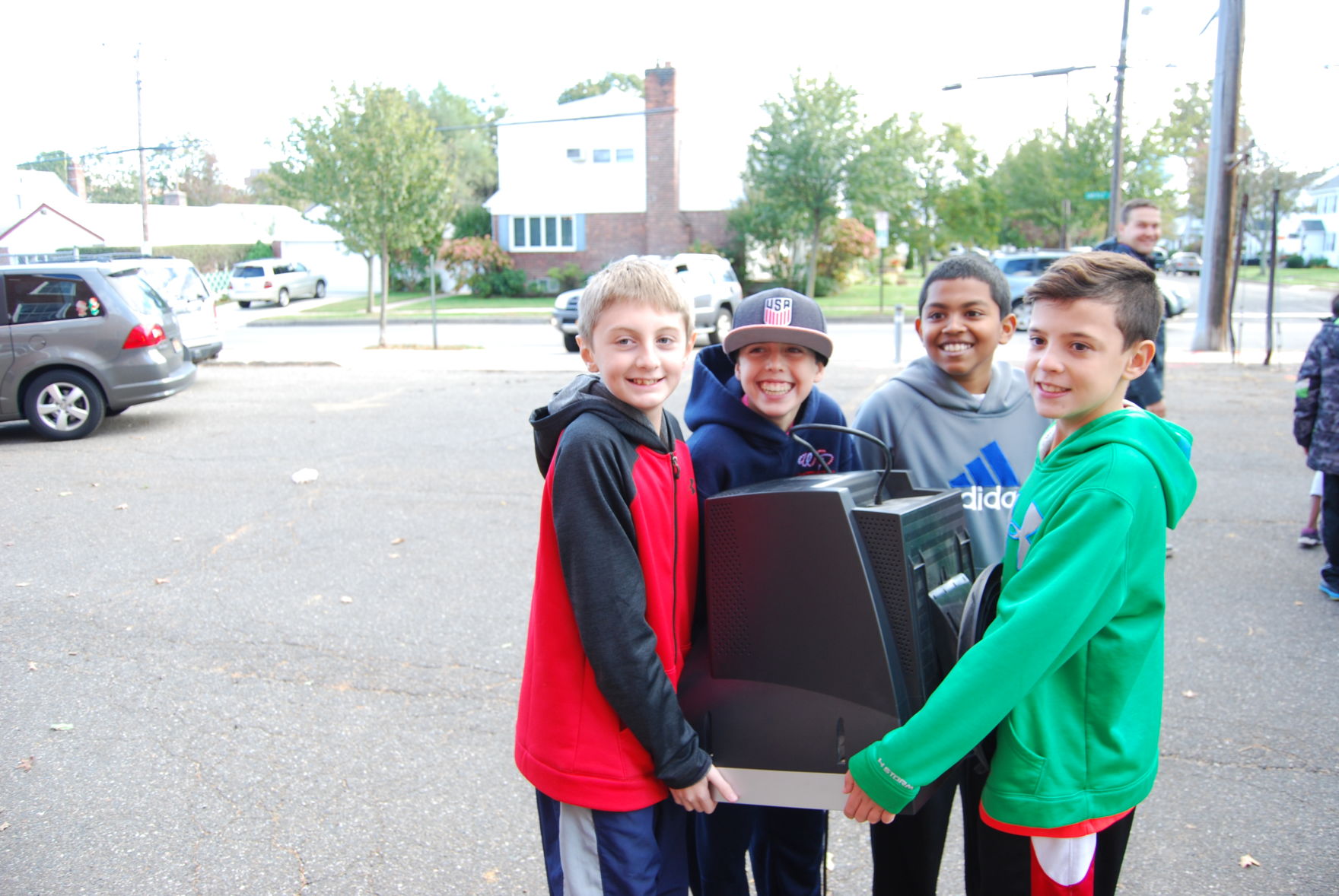Mineola Middle School students got a glimpse at where the iPads they use in class every day will go after they’re done with them.
About 60 students in the school’s robotics club and environmental club collected hundreds of pounds of TVs, cellphones and other devices Friday afternoon during their second annual electronic waste drive.
It’s an effort to keep harmful chemicals in those items out of the environment and a way to show students how they can help protect it, said Vince Interrante, the robotics club adviser.
“They’re using devices every day, and I think it just completes the message of, when a device becomes outdated or it becomes obsolete, you don’t just throw it away,” said Andrew Casale, the school’s principal.
The robotics club collected 4.5 tons of electronic waste, or e-waste, in its first drive last year as part of the FIRST Lego League robotics competition, Interrante said. Their efforts won them an “Innovation Award” in the contest, he said.
Robotics students partnered with the environmental club this year to turn the drive into a broader community service event, and they expect to get close to the amount of waste they collected last year, Casale said.
It’s one of few opportunities Mineola residents have to properly dispose of their devices, which contain harmful chemicals that can damage the environment if they’re tossed out with the trash, Interrante said.
“There’s a tremendous amount of hard metals that are incorporated in everyday electronics, and if that is disposed of improperly, it goes into the groundwater, it affects the environment, it affects the animals,” Interrante said.
Students unloaded items from cars and put them into a large dumpster outside the school.
The e-waste they collected varied widely in size and age, from old cellphones and video casette players to a two-year-old, 60-inch flat-screen TV, Interrante said. Some local businesses dropped off their old electronics, he said.
Farmingdale-based Two Brothers Scrap Metal would then grind down the items and separate the plastic from metals and other elements, all of which can be recycled and used to make new devices, Interrante said.
“It’s bad for the environment, so instead we recycle it and make use of it,” said Deniz Guvecoglu, a seventh-grader and robotics club member who volunteered at the drive.
Only 19 percent of computers, TVs, cellphones and other devices were properly recycled in 2010, according to the Environmental Protection Agency.
Mineola schools have worked to fully integrate technology into their classes. Students and teachers use iPads for class activities on a daily basis, and the district has won honors for its digital education initiatives.
The e-waste drive teaches students about the importance both of e-waste recycling and community service, Casale said.
“We learn that there’s many ways that we can help the environment, and this is one of them,” Guvecoglu said. “Anyone can do it too.”



